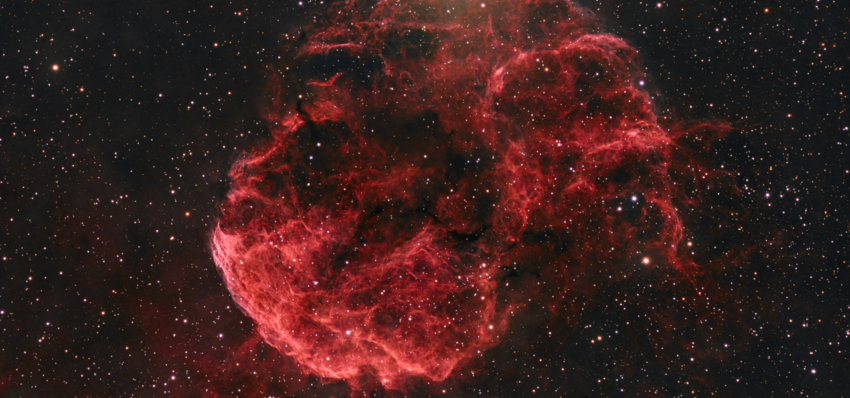There you go! My first photo from the PixelSkiesAstro observatory in Castillejar shows a truly fascinating celestial object – IC 443, also known as the Jellyfish Nebula. This is a supernova remnant, the aftermath of a massive star explosion that occurred approximately 30,000 years ago, located about 5,000 light-yearsfrom Earth in the constellation Gemini. This nebula is known for its distinctive, “shredded” and filamentary appearance, resembling the tentacles of a jellyfish. This complex structure is the result of the supernova shockwave colliding with dense molecular clouds in the surrounding interstellar medium. The interaction sculpted the nebula into the intricate patterns we can admire today.
Astrobin: https://app.astrobin.com/i/95i2l5

IC 443 consists mainly of ionized hydrogen (Hα), helium, oxygen, and heavier elements forged during the final stages of the massive star’s life. The supernova explosion dispersed these elements into space, enriching the interstellar medium – the raw material from which future stars and planets may form. The Jellyfish Nebula is not only a visual marvel but also a key object in the study of shockwave interactions between supernova remnants and surrounding molecular clouds. Observations across radio, X-ray, and optical wavelengths allow astronomers to investigate these processes in detail. Interestingly, a pulsar – a rapidly spinning neutron star – is believed to lie near the center of the nebula, representing the dense core left behind by the exploded star.
IC 443 is a stunning reminder that a star’s death often marks the beginning of a new cycle. The materials ejected during the explosion enrich the interstellar environment, eventually contributing to the birth of new stars, planets, and possibly life.
